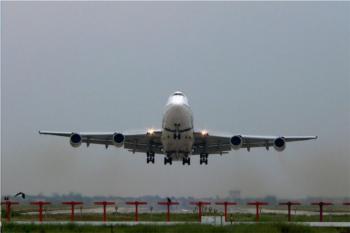Railways, bridges, airplanes and concrete - where would we be without them? And where would we be without the men and women who have designed and invented our transport infrastructure over the centuries? Here's our top five transport engineers.
1) Isambard Kingdom Brunel
Top of our list is all-rounder Isambard Kingdom Brunel, perhaps best known for his work on the Great Western Railway, with its network of tunnels, bridges and viaducts.
Brunel has also been credited with designing – at the age of 24 – the Clifton suspension bridge, (see below for latest revelation) which was only built after his death, and famous ships including the 'Great Britain', the world's first iron-hulled, screw propeller-driven, steam-powered passenger liner. He was also responsible for the redesign and construction of many of Britain's docks, including Bristol, Monkwearmouth, Cardiff and Milford Haven.
STOP PRESS: The Bristol Post has just reported this - 'A BRISTOL mother-of-six has been added to the Oxford Dictionary of National Biography with the revelation that she – and not Brunel – designed the Clifton Suspension Bridge. Sarah Guppy first patented the design for a suspension bridge across the Avon Gorge in 1811 and gave her plans to Brunel for free because she was a modest woman who wanted to see them used for the public good.'

Fixed wing aircraft have moved on since the Wright brothers
2) The Wright brothers
At the beginning of the last century, Americans Orville and Wilbur Wright took us into the modern world with the invention of air travel. In December 1903 in North Carolina, they made the first controlled, sustained flight of a powered, heavier-than-air aircraft. Over the next couple of years they developed their flying machine into the first practical fixed-wing aircraft.
However, fixed-wing aircraft would still be powered by rubber bands without the separate and parallel contributions of Dr. Hans von Ohain and Britain’s Sir Frank Whittle who are recognized as the co-inventors of the jet engine.
3) Emily Warren Roebling
Legend has it that Emily Warren Roebling was the real chief engineer behind New York’s iconic Brooklyn Bridge. In a family saga you couldn’t make up, she is said to have become the main (wo)man on the project after her husband Washington Roebling fell ill with caisson disease (decompression sickness). He had only taken over the project after his father, and the bridge’s designer John Roebling, died of tetanus.
When her husband became ill, Emily relayed information to his assistants and reported back progress on the bridge. She is said to have developed an extensive knowledge of the strength of materials, stress analysis, cable construction and calculating catenary curves, a knowledge complemented by her prior study of the bridge's construction. She took over many of the chief engineer's duties, including day-to-day supervision and project management, in the 14-year period up to its completion
4) The Romans
What have the Romans ever done for us? They didn’t exactly invent every transport and engineering structure on which we rely today but did build some fabulously straight roads, as well as arches, sewers, viaducts and aquaducts, and invented a type of concrete that is said to be superior to modern forms.
5) Penny Farthing (or Eugène Meyer)
Although her 19th century version of the bicycle never really got off the ground – unlike its riders – Penny Farthing has pride of place in the history of a sustainable transport form that now attracts hundreds of millions of government investment for its ability to tackle congestion and improve air quality.
In fact, the high-bicycle was invented in 1869 by Frenchman Eugène Meyer and the name penny farthing, based on two coins of different sizes, only came into common usage once the design was on its way out towards the end of that century, largely due to the inherent danger of the design.
Register now for full access
Register just once to get unrestricted, real-time coverage of the issues and challenges facing UK transport and highways engineers.
Full website content includes the latest news, exclusive commentary from leading industry figures and detailed topical analysis of the highways, transportation, environment and place-shaping sectors.
Use the link below to register your details for full, free access.
Already a registered? Login